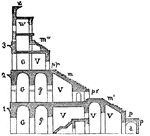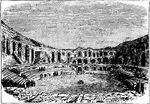Clipart tagged: ‘Stadium’
Amphitheatrum
"An amphitheatre was a place for the exhibitions of public shows of combatants and wild beasts, entirely…

Amphitheatrum
"An amphitheatre was a place for the exhibitions of public shows of combatants and wild beasts, entirely…

Roman Amphitheatre at Arles
The Arles Amphitheatre is a Roman amphitheatre in the southern French town of Arles.

Stadium
"A Greek measure of length, and the chief one used for itinerary distances. It was equal to 600 Greek…

